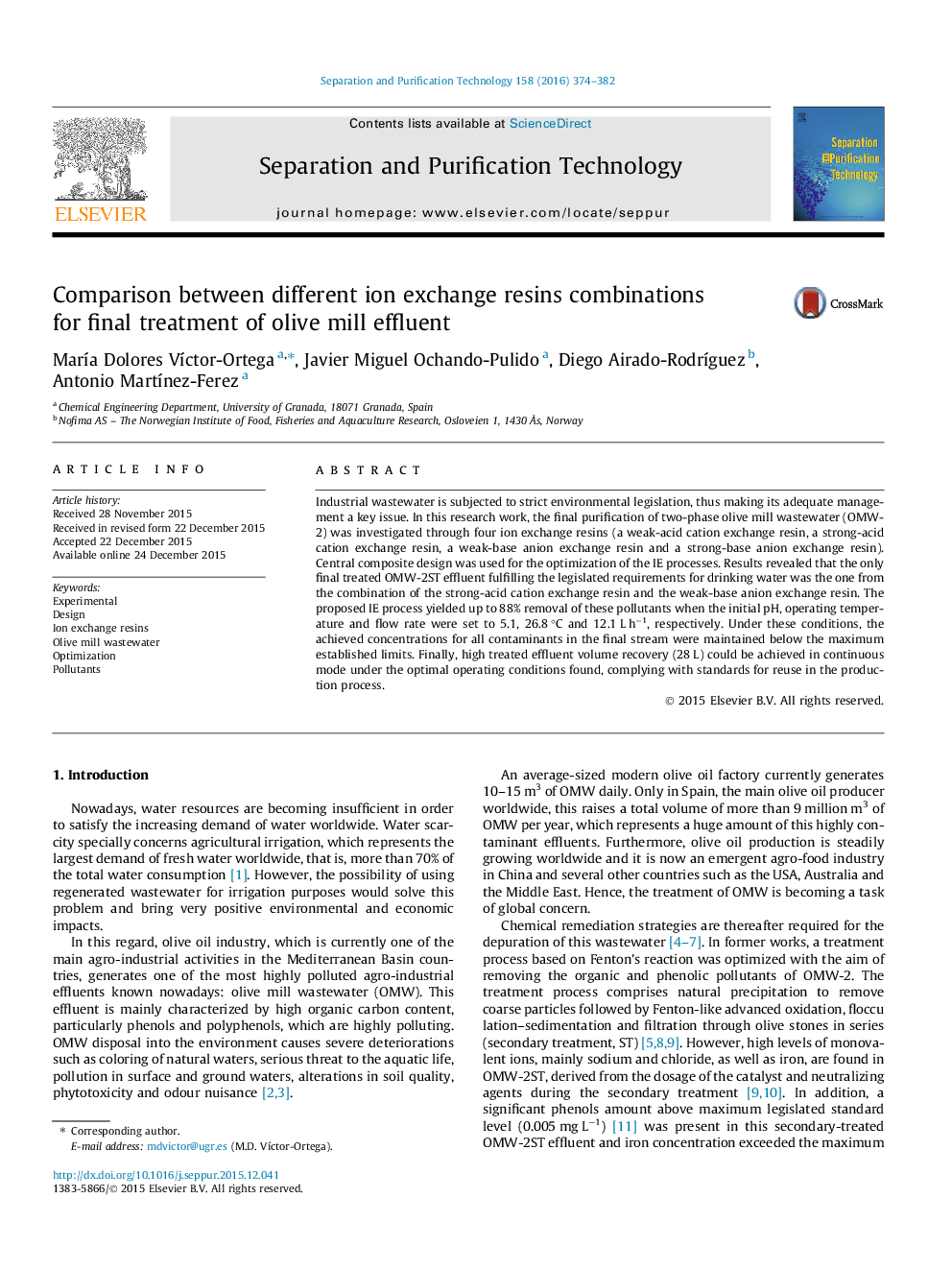| Article ID | Journal | Published Year | Pages | File Type |
|---|---|---|---|---|
| 640230 | Separation and Purification Technology | 2016 | 9 Pages |
•Optimization of final purification of olive mill effluent by four ion exchange resins.•Central composite design to study sodium, chloride, iron, phenols and COD removal.•Best resins combination was strong-acid cationic resin and weak-base anionic resin.•Optimum values of the process variables were 26.6 °C, 12.1 L h−1 and initial pH 5.1.•Final treated effluent fulfilled drinking water standards for reusing in the process.
Industrial wastewater is subjected to strict environmental legislation, thus making its adequate management a key issue. In this research work, the final purification of two-phase olive mill wastewater (OMW-2) was investigated through four ion exchange resins (a weak-acid cation exchange resin, a strong-acid cation exchange resin, a weak-base anion exchange resin and a strong-base anion exchange resin). Central composite design was used for the optimization of the IE processes. Results revealed that the only final treated OMW-2ST effluent fulfilling the legislated requirements for drinking water was the one from the combination of the strong-acid cation exchange resin and the weak-base anion exchange resin. The proposed IE process yielded up to 88% removal of these pollutants when the initial pH, operating temperature and flow rate were set to 5.1, 26.8 °C and 12.1 L h−1, respectively. Under these conditions, the achieved concentrations for all contaminants in the final stream were maintained below the maximum established limits. Finally, high treated effluent volume recovery (28 L) could be achieved in continuous mode under the optimal operating conditions found, complying with standards for reuse in the production process.
